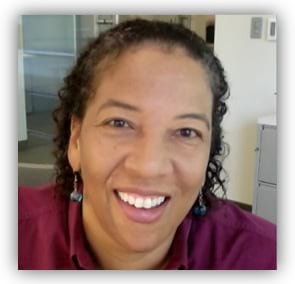From the Esri Insider blog post

Science at Esri continues to be an exciting initiative where we are concerned with supporting both basic and applied science, while also recognizing that there are many major themes of compelling interest to society that will drive scientific research for the next two decades. Thus we view science as helping us to understand not only how the Earth works, but also how the Earth should look (e.g., by way of geodesign), and how we should look at the Earth (i.e., by way of Earth observation in varying forms and the accompanying data science issues of analysis, modeling, developing and documenting useful datasets for science, interoperating between these datasets and between various approaches). In addition to supporting the science community, we seek to do good science at Esri ourselves, as it underpins much of what we do as an organization. This is helping us to evolve ArcGIS into a comprehensive geospatial platform for science; a platform that supports research project management and collaboration, spatial analysis, visualization, open data, and communication of science, all at multiple scales (i.e., from individual researcher to lab workgroup, to multi-department, multi-university, university-to-agency collaboration, to citizen engagement).
You can always track the totality of the Esri science initiative at esriurl.com/scicomm, but as we near the end of 2015’s first quarter, here are some highlights of the immediate road ahead.
- Two new science books from Esri Press: Mapping and Modeling Weather and Climate with GIS, already out, features leading climatologists, meteorologists, and other experts sharing approaches to advance atmospheric and ocean science through GIS. Ocean Solutions, Earth Solutions, due out in the late spring, is a peer-reviewed research monograph based on papers presented at the inaugural Esri Ocean GIS Forum. It is about use-inspired science and realistic solutions for mapping, monitoring and protecting the ocean, hence the entire Earth. It will be the first Esri Press book to employ Digital Object Identifiers (DOIs) for citation of both chapter text and supplementary datasets (further reading on citations).
- Citizen science taking more center stage, including Esri participation at the inaugural Citizen Science Association Conference, a range of apps to support citizen science projects, and including the White House Science Fair.
- Continued progress with SciPy and multidimensional scientific datasets including the new Scientific Data Workflows package and the Dimension Explorer.
- Improvements to both the Ecological Land Units map, as we are currently seeking improved and higher-resolution land cover layers, and to our Global Population Map. See info on Esri’s new World Population Estimate layer.
- To complement the Ecological Land Units, we have begun scoping a new Ecological Marine Units (EMUs) map. An initial advisory includes scientists from the USGS, Duke University, GRID-Arendal, the Marine Conservation Institute, NatureServe, and NOAA. The environmental stratification approach will involve creating an empty, volumetric column-based mesh as a global, spatial reference standard and analytical framework, populating the spatial framework with relevant marine physical environment data including water column variables and seafloor geomorphological features, and clustering the abiotic data into ecologically meaningful, 3D regions represented as volumetric polygons. The EMUs will subsequently be analyzed against species distribution data to assess strength of relationship between distinct abiotic environments and species biogeography. Initial results expected at the end of 2015.
- Closer integration with R: Stay tuned for more information an open source bridge library on GitHub that will facilitate the passing of data between ArcGIS and R, with an aim toward build a community of people who develop R-based geoprocessing tools that are shared freely and openly, along with sample data.
- A new site license (also known as the science kit) for standalone research organizations in the US.
- Many are still unaware of our Visiting Faculty/Sabbatical Program. If considering an extensive time in residence at Esri headquarters, please see these guidelines.


Article Discussion: